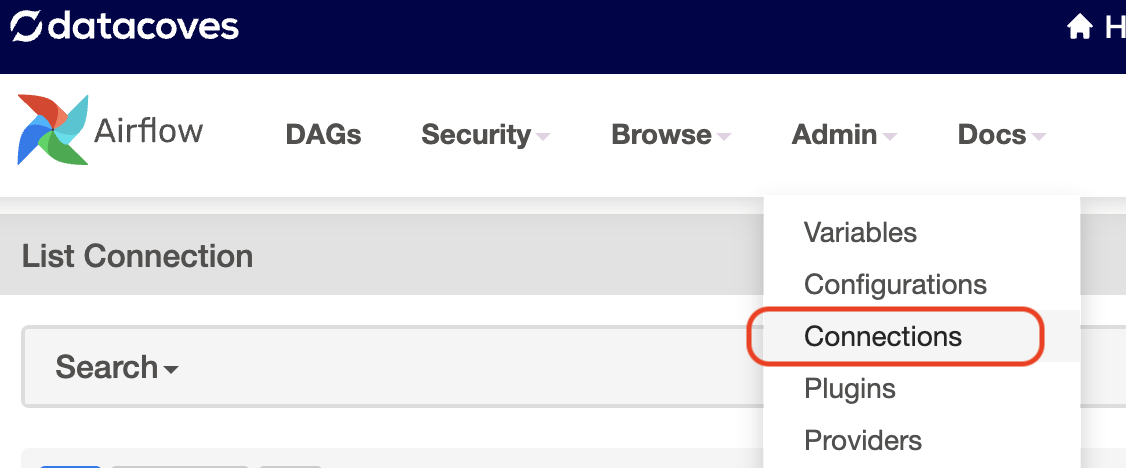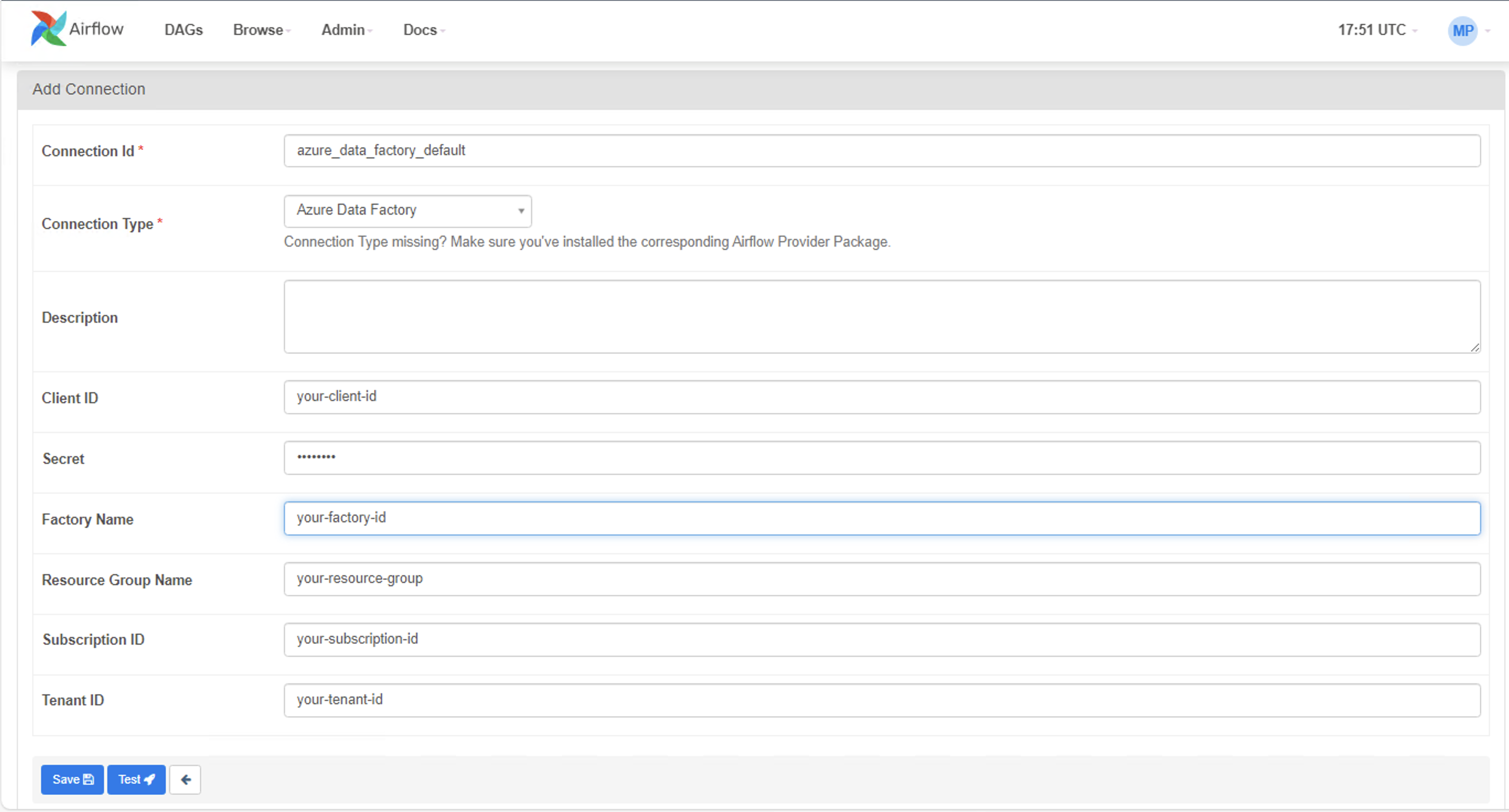Use Microsoft Azure Data Factory Operators
You can use Airflow in Datacoves to trigger a Microsoft Azure Data Factory pipeline. This guide will walk you through the configuration process.
Prerequisites
- You will need to set up a Microsoft Entra Application .
-
Assign the
Data Factory Contributorrole to your Microsoft Entra Application. You can do this by heading into Resource Groups and then following these instructions . -
Collect the following values from your ADF account, more information on where to find these items in the next section:
-
DATA_FACTORY_NAME -
RESOURCE_GROUP_NAME -
SUBSCRIPTION_ID -
APPLICATION_CLIENT_ID -
TENANT_ID -
CLIENT_SECRET
-
How to get the ADF information
Step 1: Login to your Microsoft Azure console and navigate to the Data Factories service .
Step 2:
Copy the
DATA_FACTORY_NAME
for the factory which holds your data pipeline.
Step 3:
Open the factory and copy the
RESOURCE_GROUP_NAME
, and the
SUBSCRIPTION_ID
from the Overview tab
Step 4:
Navigate to the Microsoft Entra ID service, click on number next to
Applicaitons
on the Overview tab. Next click the
All Applications
tab, open the application or register a new application then open it and copy the
APPLICATION_CLIENT_ID
and Directory
TENANT_ID
.
Step 5:
Click on
Certificates and Secrets
and generate a new secret for your Microsoft Entra Application and copy the
Value
. This is the
CLIENT_SECRET
.
Create a Microsoft Azure Data Factory Connection in Airflow
Step 1:
In Datacoves, a user with the
securityadmin
role must go to the
Airflow Admin -> Connection
menu.

Step 2: Create a new connection using the following details.
-
Connection Id:
azure_data_factory_default<- this name will be used in the Airflow DAG and is the default name used by the ADF Operator -
Connection Type:
Azure Data Factory -
Client ID: Your
APPLICATION_CLIENT_ID -
Secret: Your
CLIENT_SECRET -
Tenant ID: Your
TENANT_ID -
Factory Name : Your
DATA_FACTORY_NAME -
Resource Group Name : Your
RESOURCE_GROUP_NAME -
Subscription ID: Your
SUBSCRIPTION_ID
Note
Replace the values in the screenshot below with the actual values found above.

Example DAG
Note
You will need to update the
pipeline_name,resource_group_name, andfactory_namearguments below with the correct names.
Once you have configured your Databricks connection and variables, you are ready to create your DAG. Head into the
Transform
tab to begin writing your DAG inside
orchestrate/dags
.
"""Example Airflow Azure Data Factory DAG."""
from datetime import datetime
from airflow.decorators import dag, task_group
from airflow.providers.microsoft.azure.operators.data_factory import AzureDataFactoryRunPipelineOperator
from airflow.providers.microsoft.azure.sensors.data_factory import AzureDataFactoryPipelineRunStatusSensor
@dag(
schedule="@daily",
start_date=datetime(2024, 1, 1),
tags=["version_1"],
catchup=False,
default_args={
"azure_data_factory_conn_id": "azure_data_factory_default",
"factory_name": "your-factory-name",
"resource_group_name": "your-resource-name",
},
)
def adf_example_run():
"""Run an Azure Data Factory pipeline with async status checking."""
@task_group(group_id="adf_pipeline_group", tooltip="ADF Pipeline Group")
def adf_pipeline_tasks():
run_pipeline = AzureDataFactoryRunPipelineOperator(
task_id="run_pipeline",
pipeline_name="myTestPipeline", # Rename to your Pipeline name
parameters={"myParam": "value"},
wait_for_termination=False,
)
# Deferrable sensor for async pipeline status checking
pipeline_run_async_sensor = AzureDataFactoryPipelineRunStatusSensor(
task_id="pipeline_run_async_sensor",
run_id=run_pipeline.output["run_id"],
deferrable=True,
)
run_pipeline >> pipeline_run_async_sensor
adf_pipeline_group = adf_pipeline_tasks()
DAG = adf_example_run()
Understanding the Airflow DAG
- Understand how to authenticate with ADF .
- The DAG makes use of the AzureDataFactoryRunPipelineOperator to run an Azure Data Factory pipeline. It also shows how it’s possible to pass parameters that can be used in the pipeline.